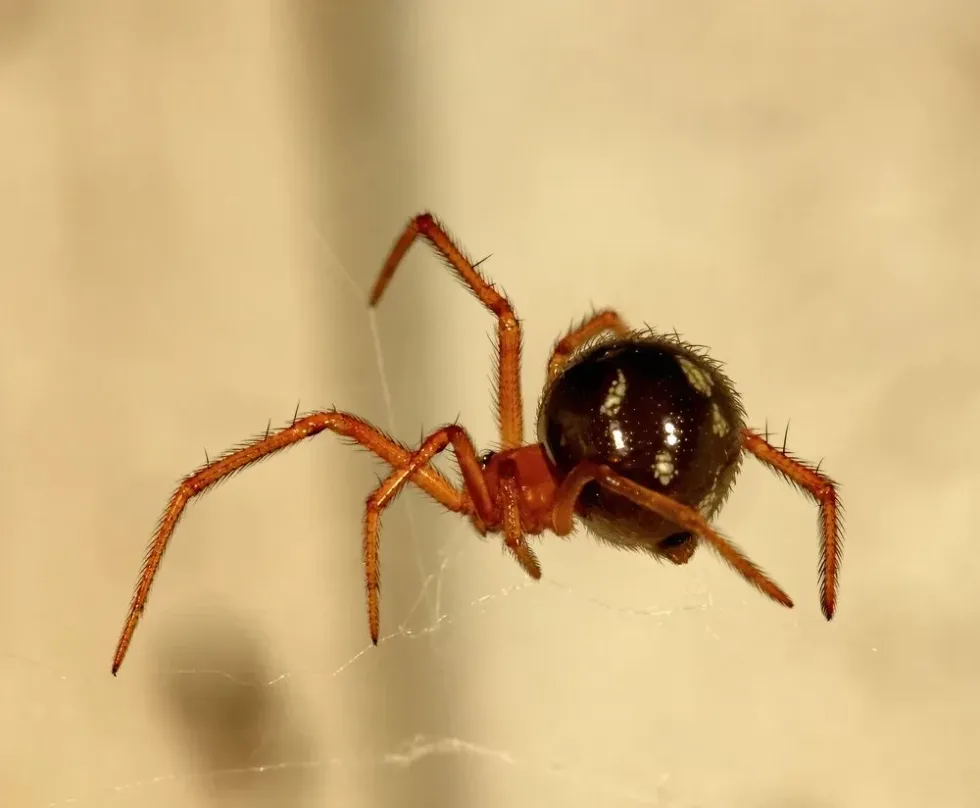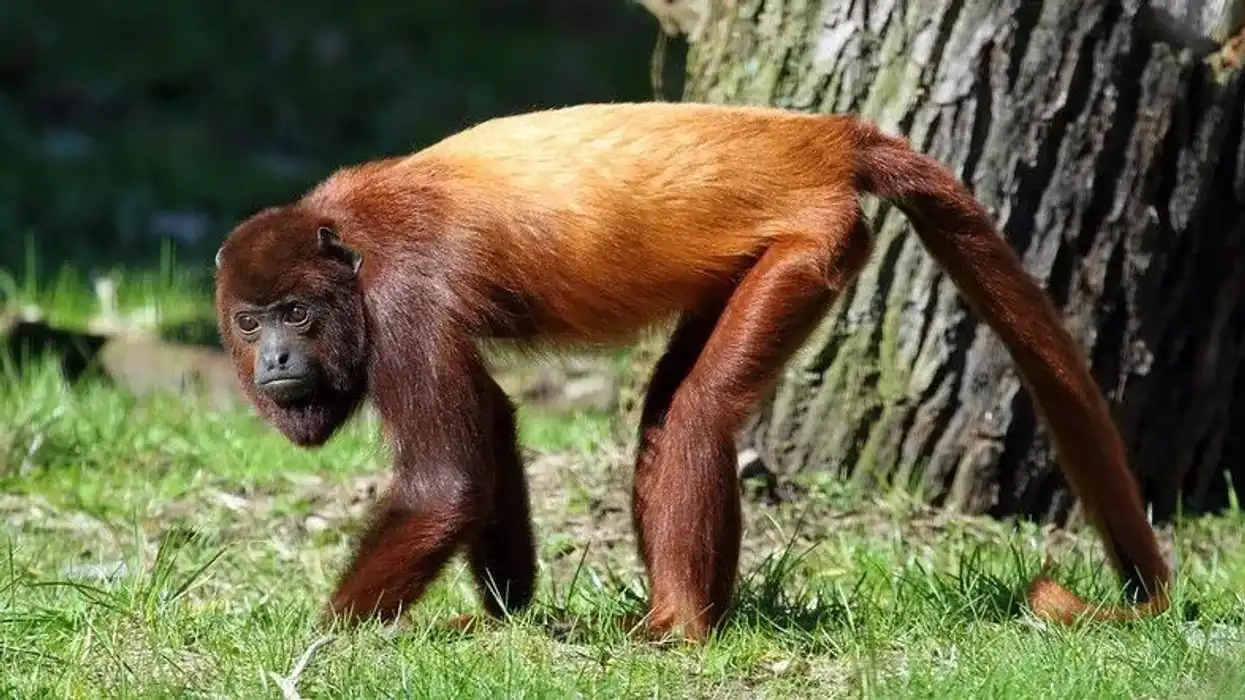Red house spiders are arachnids that belong to the Nesticodes Genus. Its scientific name is Nesticodes rufipes. They can be spotted worldwide, especially in the United States, Venezuela, Hawaii, Texas, India, Florida, and Australia.
This spider has eight legs, and the legs are red-brown. Males are 0.11 in (2.79 mm) long (excluding legs), and females are 0.27 in big (6.8 mm) (excluding the length of their legs) - females are usually bigger than males.
Their abdomen is round and bigger than their head which is dark reddish-brown. Its abdomen is similar to that of its close relative, the black widow spider.
These house spiders weave messy, tangled webs to live in. The messy web protects them from predators and helps them to trap their prey as well. A red house spider feels its prey with the hair on its legs and then further senses if the prey is consumable.
The leg hair gets scents and vibrations from the air. According to a few pieces of research, these spiders are spotted on the web 48% of the time. Once it weaves its web, it waits for the prey to get trapped.
They are not dangerous like other spiders (their bite is similar to a rattlesnake's). There are a few red house spider bite symptoms, including swelling on and around the area of the bite and inflammation.
If you liked reading about these facts, you could also check out sac spider facts and crab spider facts.
Red House Spider Interesting Facts
What type of animal is a red house spider?
The red house spider is a carnivorous arachnid that lives in darker places inside the house; it lives in an extremely messy web.
What class of animal does a red house spider belong to?
Red house spiders (Nesticodes rufipes) belong to the Archinadae class of animals.
How many red house spiders are there in the world?
The exact population is unknown, but red house spiders are common in many parts of the world.
Where does a red house spider live?
Red house spiders live around the garden area and in houses, especially in darker and cool places.
What is a red house spider's habitat?
These house spiders are spread worldwide, primarily in Texas, California, Australia, and Florida. The red house spider has a special inclination for hotter environments. Regardless of this inclination, it can also be found in cooler spots like inside homes or shady places outside.
Who do red house spiders live with?
The big red house spider is mostly seen living in solitude. They are very territorial and tend to get aggressive if other species invade their territory.
How long does a red house spider live?
There is no such data about the life span of red house spiders but its close relative, the black widow spider, has a lifespan of one to three years.
How do they reproduce?
Red house spiders reproduce consistently throughout the year. The female spider makes a round egg sac that is kept close to the web yet not directly resting on the web.
The egg sacs themselves are round and thickly packed. The egg is nearly equal in size to the abdomen of a grown-up female.
There are a few dozen eggs wrapped up inside each egg sac in the web. Therefore, if you spot a small red spider in the house, getting fully rid of them is the ideal approach to control a pervasion.
What is their conservation status?
The red house spider is usually found in many parts of the world suitable for its habitat. Their status, however, is Not Evaluated so it is assumed they are not in any danger at all.
Red House Spider Fun Facts
What do red house spiders look like?

The red house spider is reddish-brown. Their abdomen is darker in color and round. Females have an hourglass mark on the underside of their abdomen and possess a red band.
How cute are they?
The spiders are generally not cute, and just like any other spider, the cuteness factor of the red house spider species can be very subjective, as they are very small. Even though its bite has low-toxic venom, most humans are scared of its bite, and a few even get scared by seeing them around.
How do they communicate?
There hasn't been any study on the communication ways of this species. Spiders, in general, indulge in seismic communication with the help of vibrations.
How big is a red house spider?
A male red house spider (Nesticodes rufipes) is 0.11 in (3 mm) in length, and the female is 0.27 in (7 mm) in length, excluding their legs. Females are bigger than males of this species.
How fast can red house spiders move?
Their speed is not known, but they are often seen moving quite fast (when they are about to hunt or protect themselves from predators). Studies claim that the fastest house spider can move up to the speed of 1.17 mph (1.89 kph).
How much does a red house spider weigh?
There is no such data about the weight of the red house spider.
What are the male and female names of the species?
There is no specific name for female and male red house spiders (Nesticodes rufipes).
What would you call a baby Red House Spider?
The baby red house spider, after it hatches from the egg, is known as a spiderling.
What do they eat?
These house spiders eat larder beetles, house flies, ants, and other insects.
Are they harmful?
The venom of these spiders can cause swelling of the bitten area, but it is not as dangerous as other spiders (which can cause infection if they bite).
Would they make a good pet?
These close relatives of the black widow spider are not the best pets. Apart from their very small size, hunting for insects is a very difficult job.
Did you know...
A male red house spider has two extremities called ‘pedipalps’.
Does a red house spider bite?
Yes, red house spiders bite, and it is pretty painful. The venom of these house spiders is non-necrotic and does not damage skin cells. The site is like a brown hermit bite. These spiders do not display attack behavior without any reason but can bite you if their web is upset, so be careful when clearing out spider webs.
How to get rid of a red house spider?
People complain a lot about the presence of a red spiders in their houses, but getting rid of them is the easiest thing. One should do proper cleaning and dusting.
Ensure the number of bugs that these spiders consume as food is kept to a minimum. Another way to get rid of the small red spider is to fill gaps and fix the breaks and holes in the windows, doors, and foundations.
Here at Kidadl, we have carefully created lots of interesting family-friendly animal facts for everyone to discover! Learn more about some other arthropods, including giant clam facts or spiny orb weaver facts.
You can even occupy yourself at home by coloring in one of our free printable red house spider coloring pages.










